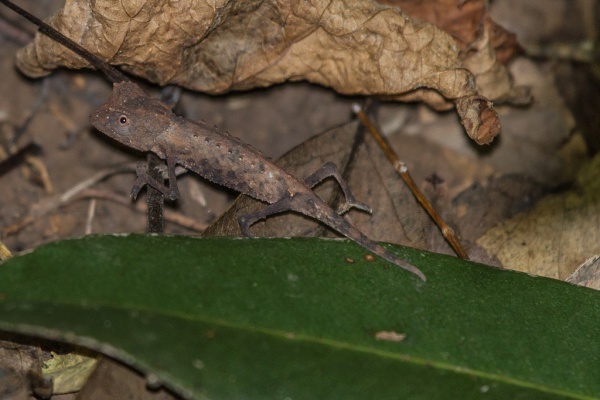Facts About Brookesia minima
Brookesia minima, commonly known as the dwarf chameleon, Madagascan dwarf chameleon, minute leaf chameleon, and Nosy Be pygmy leaf chameleon, is a tiny yet captivating species of chameleon. It was once considered the smallest lizard in the Chamaeleonidae family until B. micra, an even smaller species, was discovered in 2012.
Native to Nosy Be, an island off the northwest coast of Madagascar, Brookesia minima can also be found in the Manongarivo Reserve on Madagascar's mainland. This diminutive lizard is the second-smallest ever described and possesses all the typical chameleon traits: independently rotating eyes and a prehensile tail designed for gripping.
In terms of appearance, Brookesia minima features a light grey head, back, and tail, with brown sides and dark spots. Its limbs are primarily dark brown, and when stressed, it can exhibit a spotted pattern. Adults have a flattened head with large scales forming triangular plates above their eyes, along with small granular protrusions along their backs. Males are slimmer than females and can be identified by a hemipenial bulge at the base of their tails. Females can grow up to 3.4 cm in length, while males reach up to 2.8 cm.
In the wild, these chameleons are relatively active, navigating low branches and leaf litter in their rainforest habitat. They can be somewhat aggressive toward each other, and their population density can reach up to one animal per square meter. Although their reproductive habits are not well-documented, a typical clutch consists of two eggs.
Brookesia minima belongs to a group of Madagascan dwarf chameleons that includes species such as B. dentata, B. tuberculata, B. peyrierasi, and possibly other yet-to-be-identified species. These chameleons have distinctive adaptations and behaviors that enable them to thrive in Madagascar's rainforests.

 Mozambique
Mozambique